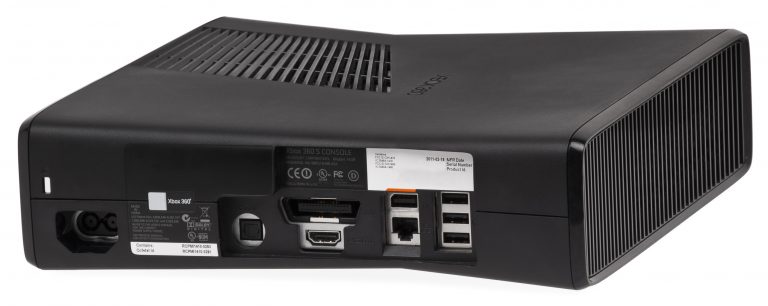Kilobit – megabit – gigabit : bit sizes explained

We use data transfer rates for things like identifying how fast a hard drive port is or telling how quickly your network is loading videos. Often times bit rates are used, but what is a bit and how to use it to evaluate data speeds?
The Basics of Bits
First of all, you need to know what a bit is exactly. A bit is a binary digit and is the base unit of modern computer technologies. A bit can have a value of either one or zero, which is expressed in computing systems as a short electrical signal (1), or lack thereof (0). Don’t mix up bits with bytes because 1 byte = 8 bits.
Bytes are used as a data measuring unit because an 8-pack of bits gives you 256 combinations, which is enough for all English letters and punctuation to each have their own combination. Thus bytes give programmers the basic building blocks for creating more complex programs and systems, as opposed to bits that would be just separate base values of signals. At the same time, bits remain the more exact representation of data stream speeds.
Secondly, understand how different magnitudes of bits are measured. As you may have figured out yourself, a simple high or low signal can’t create images, videos or entire games on your computer. This is why massive amounts of bits are easier to write down and visualize with prefixes kilo-, mega-, and giga-.
| Data unit | Short version | Amount in bits |
| 1 kilobit | 1kbit | 1'000 (103) bits |
| 1 megabit | 1Mbit | 1'000'000 (106) bits |
| 1 gigabit | 1Gbit | 1'000'000'000 (109) bits |
There are also higher tier prefixes, like tera-, peta-, and exa-, but currently, there are very few specialized interfaces that provide data speeds higher than 1 terabit (PCI-X or NVLink), not to mention petabits or exabits. While any amount of data can be converted to any magnitude of bits, using petabits or exabits currently would be like measuring how tall you are in miles.
Also note, that often times bit values are shortened to just “b” instead of “bit”, especially in bit rates discussed further. This is why you have to make sure what values are shown in bits “b” and what values are shown in bytes “B”. If you’re careless, a simple marketing trick of making numbers look bigger may trick you into buying a slower device.
Bit values can also be measured in kibibits (kibit), mebibits (Mibit) and gibibits (Gibit), which are values based in binary – a kibibit, for example, is 1024 bits, not 1000 (210 not 103). These values, however, are used very rarely and you probably won’t ever see them in the specs of consumer electronics.
Bandwidth of Modern Interfaces
While storage device capacities and their read/write speeds may be measured in bytes, most other network and computer interface values are measured in bits. Most importantly, bit rate – the value representing the amount of data transferred over a period of time, usually a second. Thus bit rates are measured in kilobits per second (kbps, kbit/s), megabits per second (Mbps, Mbit/s), and gigabits per second (Gbps, Gbit/s).
Bandwidth is a similar value to bit rate and is also measured in bits. Bandwidth represents the maximum bit rate a data medium can handle, while bit rate represents how much of that maximum is actually being used. For example, the bandwidth of your 802.11n router could be 450Mbps but if your internet provider can only provide you with 200Mbps internet, then that will be your bit rate. Below are some examples of bandwidth in different network and PC interfaces:
Internet Interface Bandwidth
| Interface | Bandwidth |
| Dial-up modem | 54 kbps |
| Ethernet | 10 Mbps |
| Wireless 802.11b | 11 Mbps |
| Wireless 802.11a | 54 Mbps |
| Wireless 802.11g | 54 Mbps |
| Wireless 802.11n | 600 Mbps |
| Wireless 802.11ac | 6.93 Mbps |
| Gigabit Ethernet | 1 Gbps |
Computer Bus Bandwidth
| Interface | Bandwidth |
| USB 2.0 | 480 Mbps |
| SATA Revision 2.0 | 3 Gbps |
| PCIe 2.0 x1 (1 channel) | 5 Gbps |
| USB 3.0 (3.1 Gen 1) | 5 Gbps |
| SATA Revision 3.0 | 6 Gbps |
| PCIe 3.0 x1 (1 channel) | 7.88 Gbps |
| USB 3.1 (3.1 Gen 2) | 10 Gbps |
| USB-C | 10 Gbps |
| Thunderbolt 2 | 20 Gbps (total) |
| Thunderbolt 3 | 40 Gbps (total) |
[supsystic-table-diagram id=’91’]



![How to Sync Xbox One Controller? [Explained]](https://hddmag.com/wp-content/uploads/2017/07/how-to-sync-xbox-one-controller-768x512.jpg)
![5 Simple Router Tunings for a Fast and Secure Wi-Fi [2018]](https://hddmag.com/wp-content/uploads/2017/10/5-wifi-tips-HDDMAG-768x512.jpg)

